You don’t need a sprawling living room to create an impressive indoor garden oasis. By strategically placing plants in small spaces, you’ll transform your compact area into a vibrant, nature-filled sanctuary. From vertical garden walls that utilize unused wall space to innovative corner arrangements that maximize every square foot, there’s a plant solution for even the tiniest rooms. Let’s explore ten proven techniques that’ll help you bring the outdoors in, without sacrificing your precious living space.
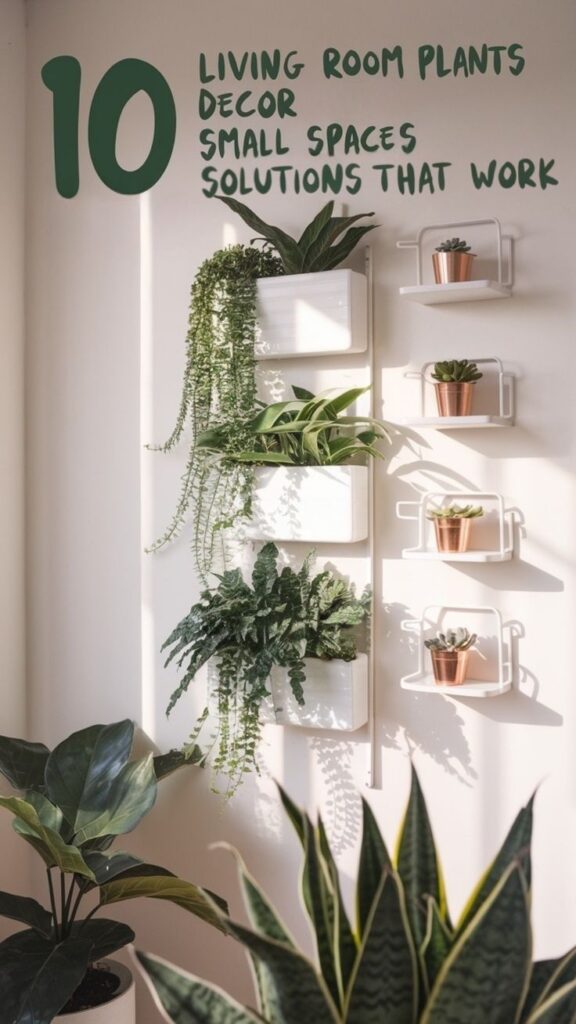
Contents
- 1 Vertical Garden Walls: Space-Saving Green Statements
- 2 Hanging Plants for Corner Maximization
- 3 Floating Shelves With Cascading Plants
- 4 Window Ledge Mini Gardens
- 5 Coffee Table Terrariums and Dish Gardens
- 6 Compact Floor-Standing Plant Stands
- 7 Air Plant Displays for Tiny Nooks
- 8 Bookshelf Plant Integration Solutions
- 9 Wall-Mounted Plant Holders and Brackets
- 10 Multi-Level Plant Corner Arrangements
Vertical Garden Walls: Space-Saving Green Statements

Vertical garden walls transform unused wall space into lush, living tapestries of plants. These upright gardens consist of mounted planters, pocket systems, or modular panels that hold multiple plants in a cascading arrangement.
Plants are strategically positioned in tiers or patterns, creating a dimensional green display that draws the eye upward without consuming valuable floor space.
The unique feature of vertical garden walls lies in their customizable nature – they can be scaled to fit any wall size and populated with a mix of trailing vines, compact foliage plants, and flowering specimens.
Common configurations include grid patterns, floating shelves with cascading plants, or fabric pocket systems filled with small potted plants.
These living walls serve both decorative and practical purposes, acting as natural air purifiers while adding texture and life to otherwise blank walls.
Most systems incorporate built-in irrigation methods or are designed for easy watering access, ensuring sustainable maintenance in tight spaces.
Hanging Plants for Corner Maximization
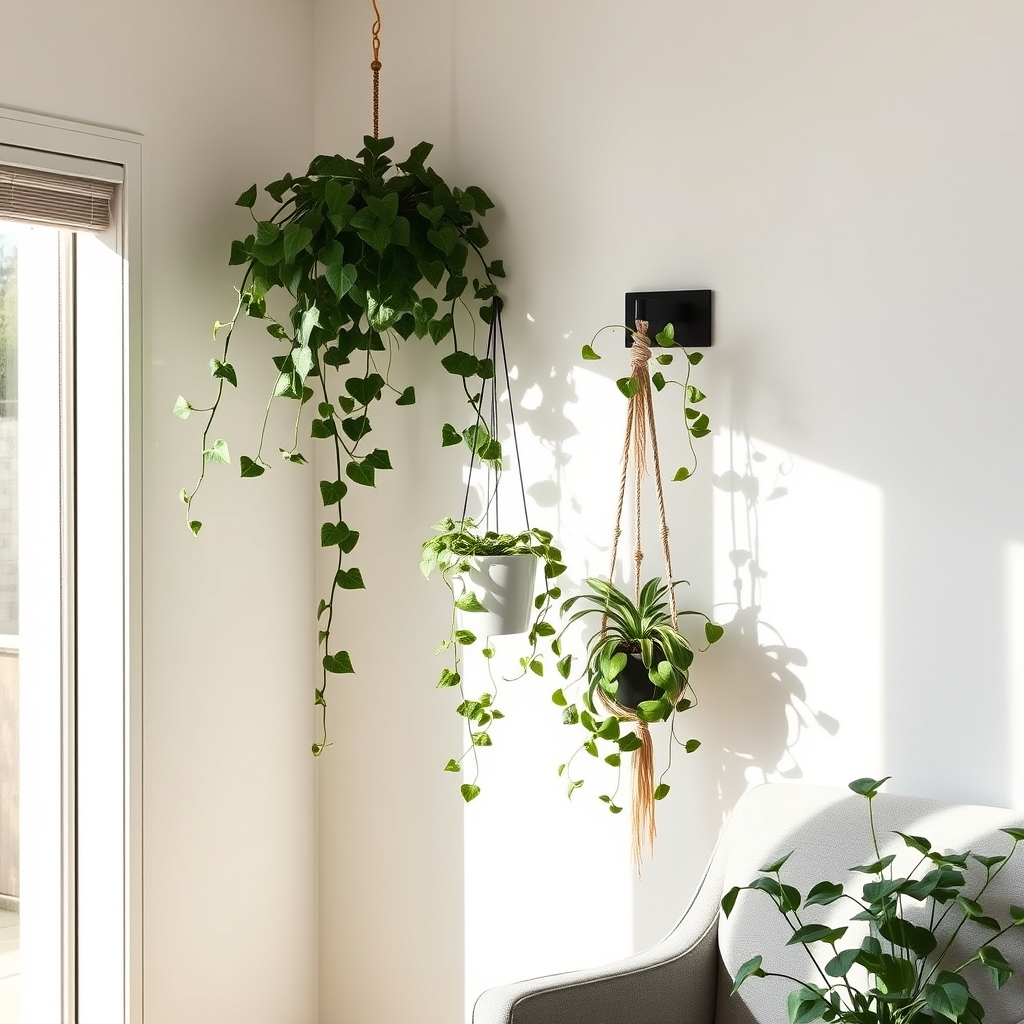
Hanging plants for corner maximization transform unused vertical space into vibrant green displays while preserving valuable floor area.
These suspended arrangements typically feature trailing plants in decorative pots or macramé holders, dangling from ceiling hooks or wall-mounted brackets. The cascading foliage creates visual interest from ceiling to floor, drawing the eye upward and making rooms appear larger.
Popular options include Spider Plants, Pothos, and String of Pearls, which naturally grow downward and require minimal horizontal space. The corner positioning allows plants to receive indirect light while keeping walkways clear and maintaining an uncluttered appearance in compact living areas.
Floating Shelves With Cascading Plants

Floating shelves with cascading plants create a vertical garden effect by combining wall-mounted shelves with trailing plants that spill over the edges.
The shelves appear to “float” on the wall without visible brackets, offering a clean, modern look while maximizing vertical space.
Popular cascading plants like pothos, string of pearls, or ivy drape gracefully downward, creating living curtains of foliage that add depth and movement to the room.
This arrangement works particularly well in tight corners or narrow wall spaces, turning unused vertical space into a dynamic green display without sacrificing valuable floor area.
Window Ledge Mini Gardens
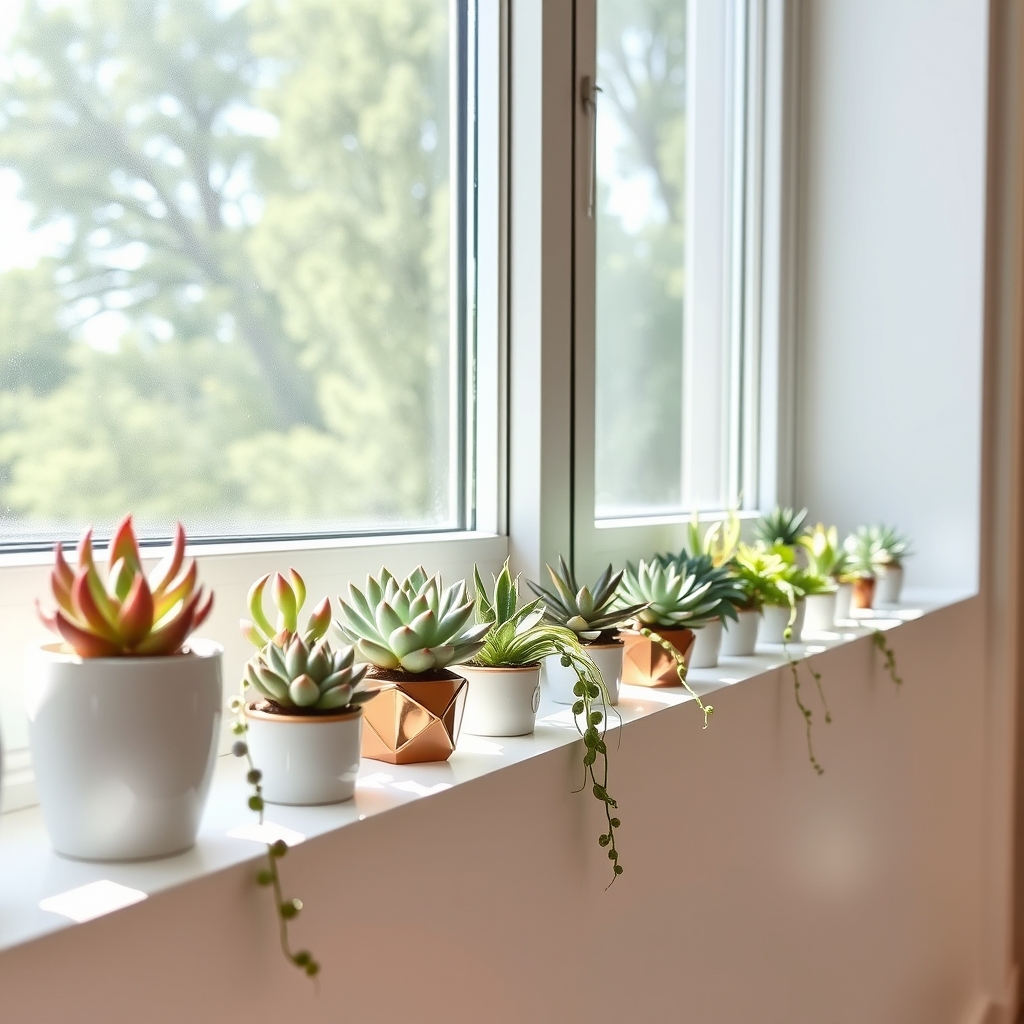
Window Ledge Mini Gardens combine multiple small plants arranged along windowsills to create compact, decorative displays.
These linear gardens typically feature a mix of low-maintenance succulents, air plants, and small potted herbs positioned to maximize natural light exposure.
Their unique feature lies in vertical layering, using tiered plant stands or varying pot heights to create depth without consuming precious floor space.
Plants are often displayed in coordinating containers like terra cotta pots, mason jars, or modern geometric planters to maintain visual harmony.
This space-efficient gardening solution transforms unused window areas into vibrant green spaces while allowing plants to thrive in direct sunlight.
Coffee Table Terrariums and Dish Gardens
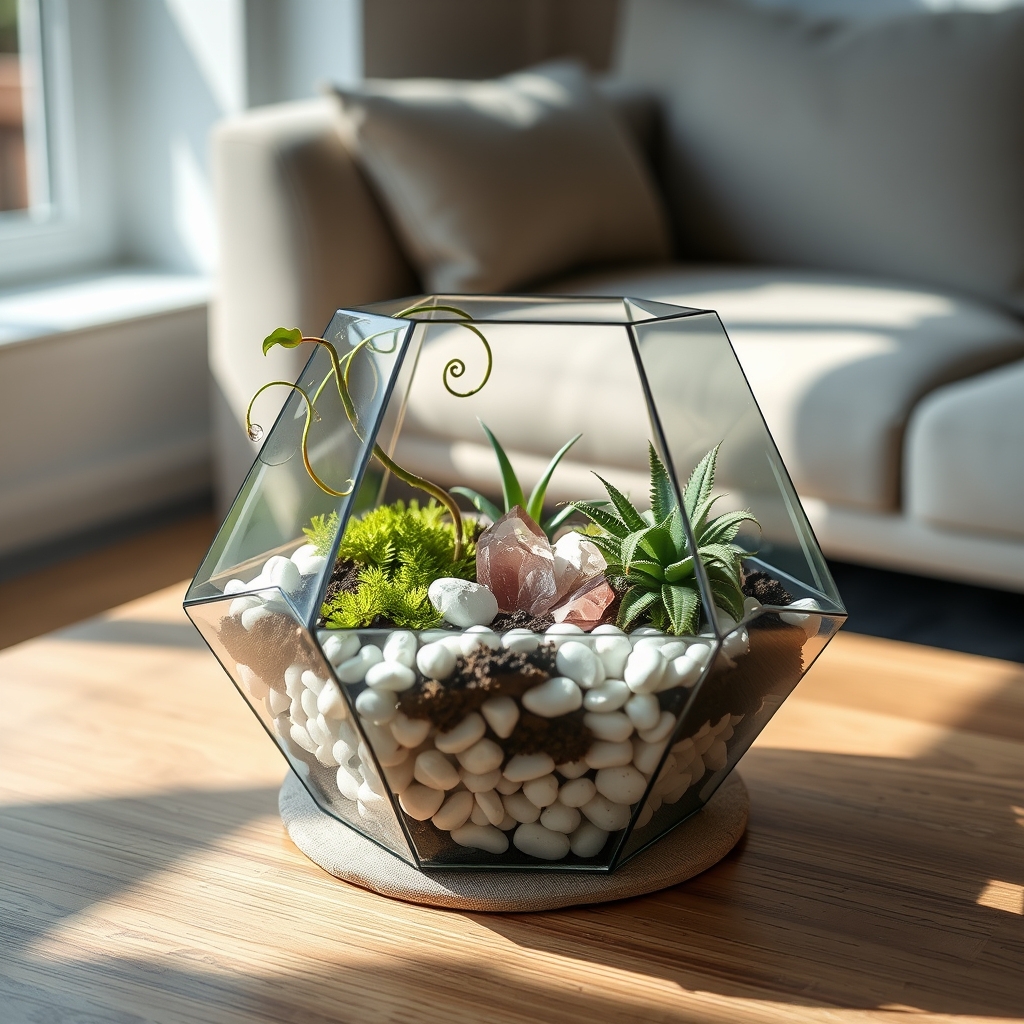
Coffee table terrariums and dish gardens serve as compact, decorative centerpieces that bring nature indoors without consuming much space.
These miniature landscapes typically feature small-scale plants arranged in clear glass containers or shallow dishes, creating self-contained ecosystems or artistic plant displays.
Terrariums commonly consist of layers of pebbles, activated charcoal, and soil, with moisture-loving plants like ferns, moss, and miniature tropical varieties.
Glass containers can be open or closed, ranging from geometric shapes to traditional globe designs.
Dish gardens are shallower arrangements using low-growing plants in decorative bowls or plates.
These often combine succulents, air plants, or small cacti with decorative elements like colored stones, driftwood, or miniature figurines.
Both options require minimal maintenance and can be customized to match any interior style, making them ideal living decorations for limited spaces while adding visual interest to coffee tables and side tables.
Compact Floor-Standing Plant Stands
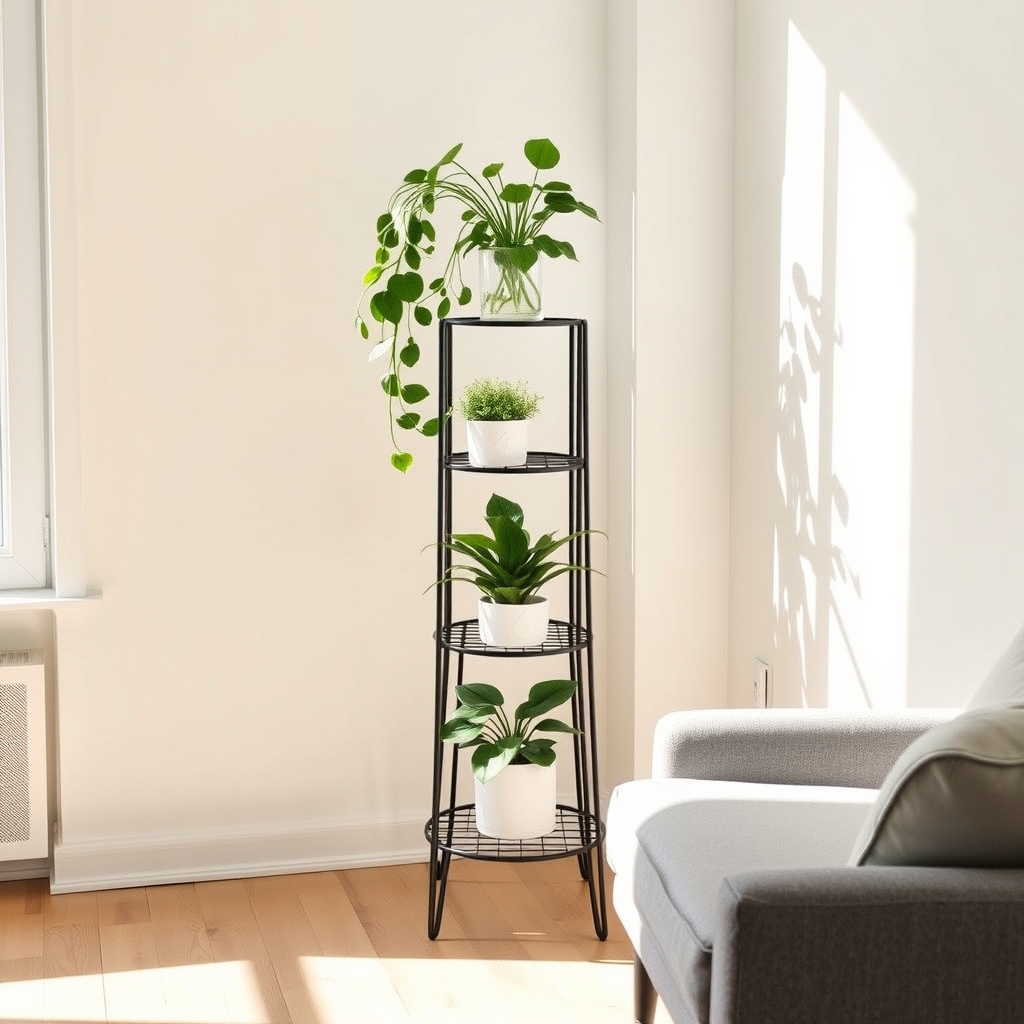
Compact floor-standing plant stands are space-efficient vertical structures designed to display multiple plants while occupying minimal floor space.
These stands typically feature tiered shelves or graduated platforms arranged in a ladder-like or spiral formation, allowing plants to be displayed at varying heights.
Most models are constructed from materials like bamboo, metal, or wood, with heights ranging from 2-5 feet tall and bases generally under 24 inches wide.
Their primary advantage is vertical organization, enabling plant owners to showcase several plants in a footprint that would typically accommodate only one large floor plant.
Air Plant Displays for Tiny Nooks
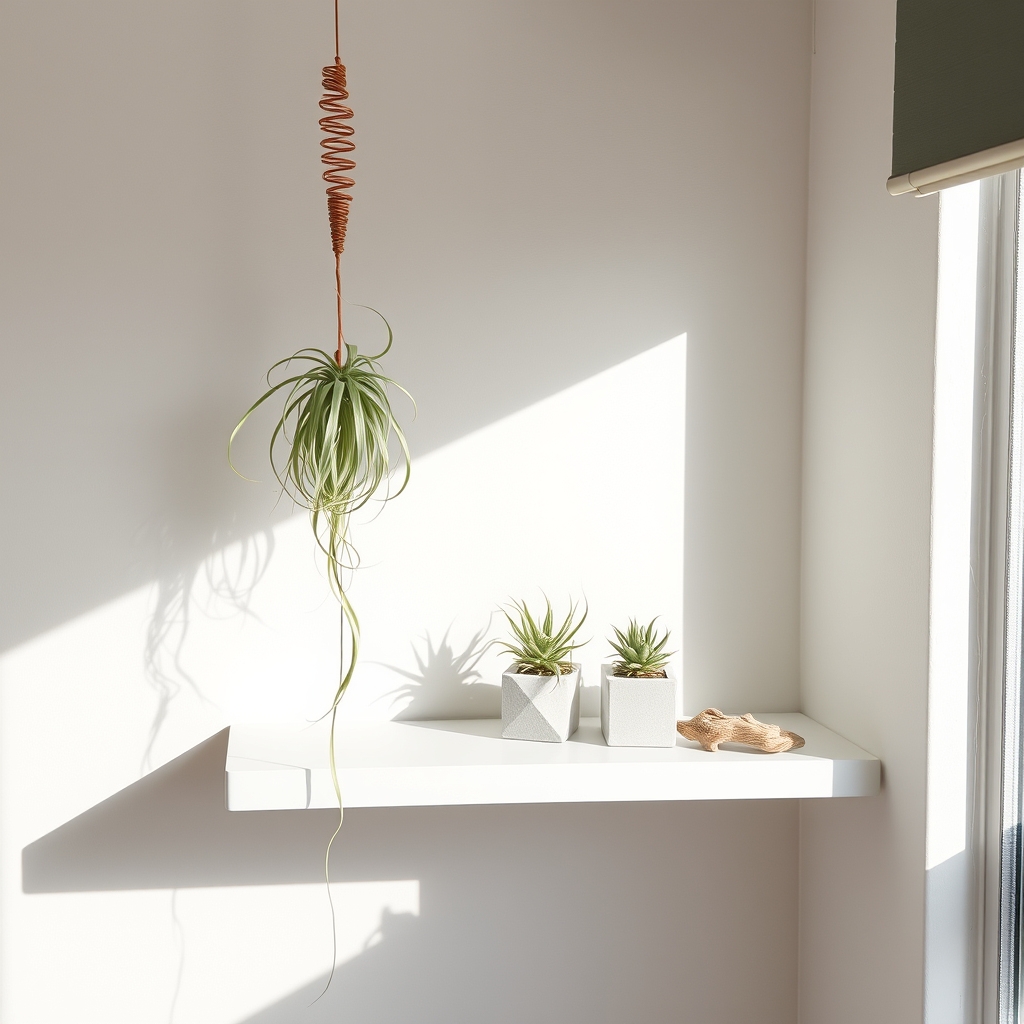
Air plant displays for tiny nooks offer space-saving greenery that requires no soil to grow.
These rootless plants (Tillandsia) can be mounted on walls, suspended in glass globes, or nestled in small decorative holders. Their spiky, silvery-green leaves form compact rosettes that typically measure 2-6 inches across.
The plants absorb moisture and nutrients through specialized scales on their leaves, allowing them to thrive in vertical arrangements or confined spaces.
Their versatility enables creative mounting options using wire, driftwood, or ceramic vessels, making them ideal for windowsills, bathroom corners, or desk areas where traditional potted plants wouldn’t fit.
Bookshelf Plant Integration Solutions
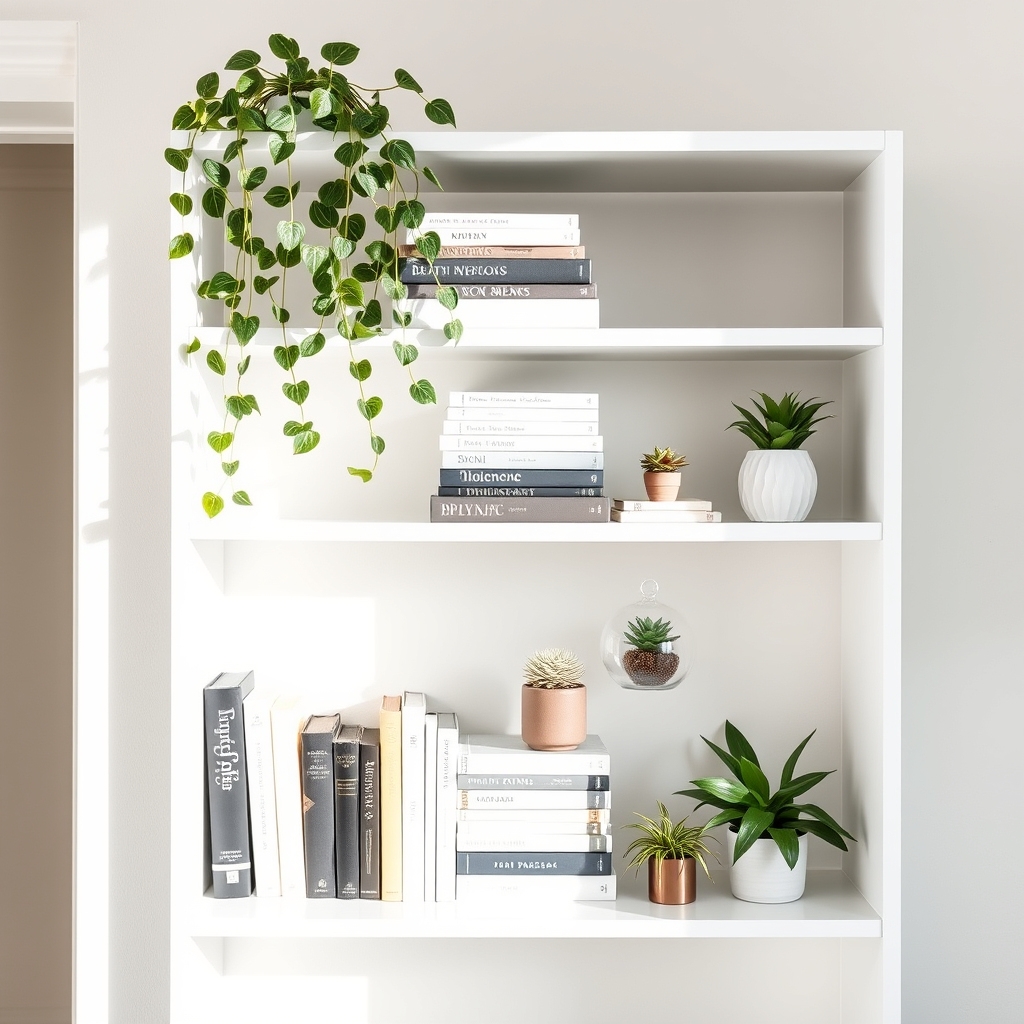
Bookshelf Plant Integration Solutions combine decorative greenery with functional storage by strategically placing small plants among books and display items.
These arrangements typically feature compact plants like pothos, air plants, or small succulents positioned on shelf edges, between book clusters, or in dedicated corner spaces. Trailing plants cascade down shelf levels, while upright specimens create visual height variations.
Key features include:
- Space-saving vertical gardening approach
- Mix of hanging and upright plant positions
- Use of slim containers and wall-mounted planters
- Strategic placement to avoid moisture damage to books
- Varied plant heights to create visual interest
- Easy access for plant maintenance
- Combination of decorative and practical elements
This setup maximizes limited space while adding natural elements to living areas, turning ordinary bookshelves into living display pieces that serve multiple purposes.
Wall-Mounted Plant Holders and Brackets

Wall-mounted plant holders and brackets are space-saving devices that attach directly to walls, allowing plants to be displayed vertically without consuming floor or surface space.
These fixtures come in various styles, from minimalist metal brackets to decorative macramé hangers and geometric shelving units. Most designs feature a secure mounting system and a platform, hook, or cradle to hold plant containers safely.
Some models include adjustable components to accommodate different pot sizes, while others incorporate water-catching trays to prevent wall damage. Popular materials include powder-coated steel, brass, wood, and woven cotton or jute for macramé options.
These mounting solutions are particularly effective for trailing plants and create visual interest at different heights while maximizing limited living space.
Multi-Level Plant Corner Arrangements
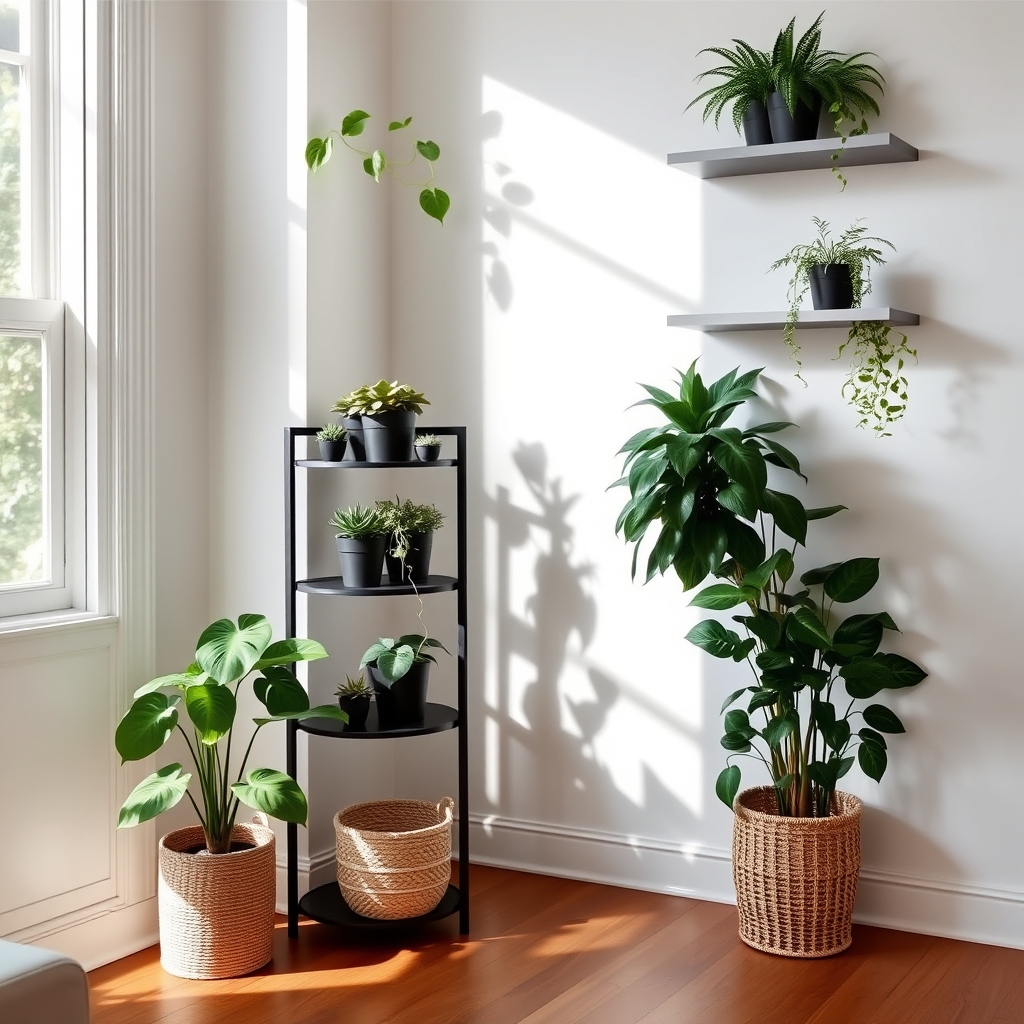
Multi-Level Plant Corner Arrangements utilize vertical space by placing plants at different heights to create a dynamic display in room corners.
Plants are positioned on tiered stands, wall-mounted shelves, or staggered pedestals, typically forming a triangular or cascading configuration. This arrangement style maximizes limited floor space while adding visual interest through varied plant heights, textures, and foliage types.
Small plants occupy higher shelves, while larger specimens rest on lower levels or the floor, creating an organic, layered look that draws the eye upward and makes efficient use of otherwise unused corner spaces.
